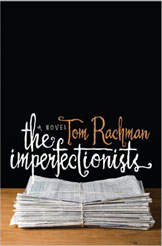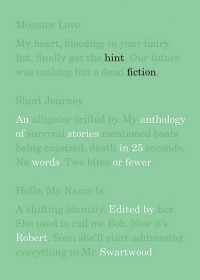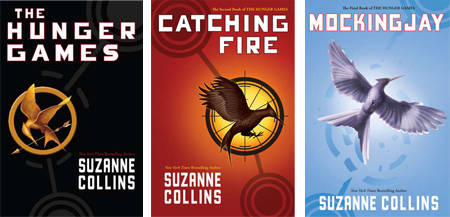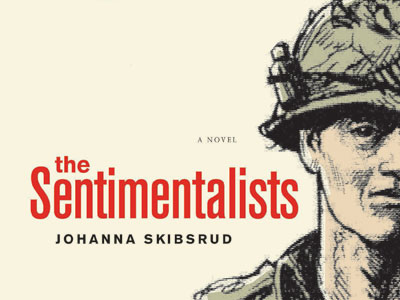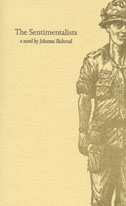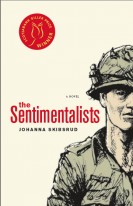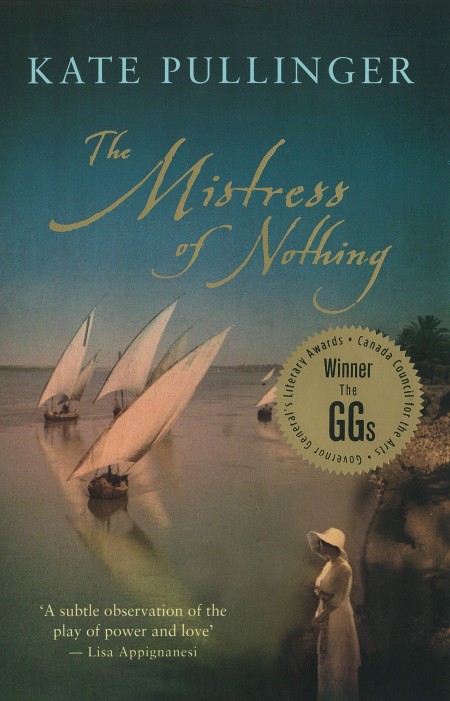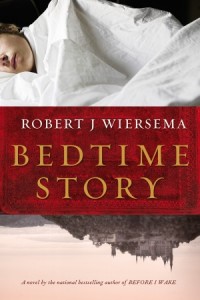I tweeted about Matthew Ingram’s post Book Publishers Need to Wake Up and Smell the Disruption and received replies from my publishing friends that were inline with the comments Matthew received on his blog. But Matthew struck a chord for me, not with his outlier examples of self-published authors selling great numbers of books for less than a dollar, but with his comments about the accumulating evidence that Kindle and iPad are industry disrupters and, in particular, that they are going to continue to have an impact on author-publisher contracts. Again, we can argue about what we consider evidence, but this is my perspective from marketing, sales and technology.
1. Technology Continues to Transform the Publishing Industry
The Product Life Cycle for some categories of printed books is in decline, meaning that the revenue generated by that category has gone from development, introduction, and growth, peaked at maturity and is now in decline (declining revenue).
The cookbook category is a good example.
Cooks still want the content, but instead of buying 101 Fast and Easy Recipes they are searching Google for what they want to make for dinner that night.
And Google just made that easier by introducing Google Recipe.
In that Decline Stage, publishers have exercised all the options:
* Maintaining the product as is.
* Reducing the costs and finding new uses for the product (rejuvenating backlist)
* Lowering prices to liquidate inventory (hello front of store at Indigo)
* Promotion (reinforcing brand image, celebrity-driven)
But at the end of the day, this is a declining category. Due to brand or author loyalty, profitability may be maintained longer for some. Plus, product life cycle doesn’t map completely to a predictable sales forecast since, in the case of cookbooks, the product doesn’t stand alone. Each book category is part of a larger ecosystem, it’s not dying in a petri dish independent of other factors.
That said, Matthew Ingram’s post Wake Up and Smell the Disruption calls to mind that marketing managers do need to address the challenges that products in a declining stage are likely to face.
For example, in the case of cookbooks, would-be-buyers are also happy to access content for free online.
A common publisher argument is that the quality of a cookbook vs. the quality of an online recipe vastly differs.

Quiz:
Is the above image from a cookbook?
Or from a blog?
You know what, the answer doesn’t matter.
The fact that free content exists means that some would-be-buyers will chose free over quality, or just as good over quality, especially if free = as good as paid.
Cookbooks, Travel, Reference: the next publisher argument is that these are outliers. Maybe they are right now, but they won’t always be.
Kindle, Kobo, iPad and even mobile phones are changing the game.
Let’s just look at text-based fiction and non-fiction. I’m not talking about the reading experience of architecutre books, photography, or kids books, just basic text.
Here’s the competition in a would-be-buyer’s mind:
* Print copy, hardcover, of The Shallows for $33.50 from an independent bookseller
* Print copy, hardcover, of The Shallows for $21.00 from Indigo at a 34% discount
* Kobo, digital edition, of The Shallows for $9.99 at a 63% discount on the list price
The arguments about whether digital is a better reading experience or not are inconsequential to many would-be-buyers when presented with $9.99 vs. $33.50 or even $21.
If you said to someone, “would you like to pay more for that,” the answer is rarely “yes.”
Digital editions of books and app versions of books are directly competing with the print editions.
This is the disruption that needs to be smelled.
2. The eBook Buyer Is the Same As the Print Buyer
BISG’s publication “Consumer Attitudes Towards E-Book Reading” tell us that
* an ebook buyer is the same buyer as print
* same demographic/psychographic
In terms of marketing, this is good because we know these people. In terms of sales revenue, it’s bad because ebooks do not represent a new, expanded market audience.
The power buyers of ebooks are:
* 30-44 years old
* women
* employed
* they entered the ebook market 6 months to 2 years ago
* as power buyers, they buy weekly
* urban
In terms of unit growth, sales units are up but this does not compensate for lost revenue.
In our above example, $23.51 differentiates the ebook version of The Shallows vs. the print edition.
We are seeing at least a $5 differential for ebooks vs. print.
In addition to that lost revenue, as an ebook buyer buys more ebooks, becomes more at ease with reading digital vs. print, enjoys the simplicity of buying on-demand, and is rewarded with reading on the go or at night in bed with the backlit screen, they buy fewer hardcover and paperbacks.
Ebooks do canabalize print (especially when measuring revenue dollars).
3. Cash Usage and Cash Generation
The Boston Matrix developed by the Boston Consulting Group in the early 1970s isn’t without its faults, but it is a simple method for looking at market share (cash generation) and market growth rate (cash usage).
(This is the point I have mulled over the least so contemplate and critique vs. simply criticizing please.)
The four categories here are:
Dogs: Low market share and low growth rate. They neither generate nor consume a large amount of cash. Backlist titles.
Question marks: Rapidly growing but also consuming large amounts of cash. Because they have low market share, do not generate much cash. The problem child. eBooks and apps.
Stars: Strong market share but also consume large amounts of cash. Frontlist. Especially frontlist print+ebook. Stars, if well positioned, can become the next cash cows and ensure future cash generation.
Cash cows: Leaders in a mature market. Generate more cash than they consume. Generates a relatively stable cash flow. Value can be determined with reasonable accuracy. The ideal print book.
You can see, of course, the immediate limitations. I’m not sure how many publishers can quickly identify their Cash Cows, as the margins in publishing are so small.
The other issue is that the many factors of profitability are overlooked in this simplified view since the products in each quadrant are not independent of the others. A dog of a cookbook could still help another cookbook gain competitive advantage. The amplification of awareness for series, or the celebrity book that is really about giving the author competitive advantage over others on speaking circuits are other examples of how this ecosystem isn’t as simple as the above framework.
The reason I bring up the matrix is that it’s a starting point for discussing resource allocation and strategic planning for those products in a Declining Stage (print books) and those in a Growth Stage (ebooks and apps).
The growth stage is the period where sales increase as more customers become aware of the product and create demand, which fuels retailers to become interested in carrying the product.
Certainly what we are seeing with the growth of ebooks and consumer demand for Kindle and iPad.
Regardless of Matthew Ingram’s examples of outliers like Seth Godin, there are fundamentals publishers need to face:
1. Book publishing is a technology-enabled business.
2. A conversation about a technology-enabled business is a conversation about market changes.
3. We can argue about the speed of change and the type of changing coming, but we should mentally prepared for the fact that change is coming (like waves on a shore).
4. There is a lifecycle for everything. People argued to keep scrolls, but they printed those arguments in bound books. (See Johannes Trithemius)
5. Few people are successfully managing the product lifecycle in all 4 quadrants. (DRM and borrowing restrictions are not endearing consumers yet publishers are implementing these measures as a necessary way to support the required staff to keep both print and ebook development during this transitionary period. Matthew Ingram points out some of the mathematical challenges of the author-publisher contracts in his post, which aren’t endearing authors either, who I think are the glue that holds the whole thing together.)
6. “Change happens through a process, not a product” (Kate Fialkowski). The internet and ereaders have changed the way we read. Search engines, websites, wikis and blogs have changed the way we publish and share information.
7. The game changers tend to be outsiders to the industry. Music changed because of the development of MP3, which meant we could more easily share music, which led to peer-to-peer sites like Napster. Then iTunes changed the cost structure. Blockbuster > Netflix. Banking > Online Banking.
What I took from Matthew Ingram’s article was just another reminder that as Kate Fialkowski says, the game changers redefine the ecosystem, change the business models, price points, distribution systems, and support processes.
I’ll let Matthew respond to his commentators but for mine:
A coffee at Starbucks costs more than a $1.50 because they changed the game. They can demand $6+ for what tastes to me like shitty, burnt coffee with excessive sweeteners that will likely develop gut rot for an entire generation because they created demand for that product.
Publishers fearing the lost of authors and staff is not equal to fearing that one of them wins the lottery.
If you value an employee, you should consider that they could win the lottery and leave.
But really, the probability of an employee winning the lottery is pretty low in comparison to the probability that good people will leave the industry altogether or that the smartest will be picked off by start-ups providing incentives to acquire the best talent. See Open Road Media, Kobo and any number of interesting new ventures.
I don’t want to haggle over the definition of “lottery” but I can tell you that the folks holding the big cheques are the ones doing ebook conversion and app development.
And a happy dance can be a lottery in itself.
(People in the system are going to make money in unexpected ways. The ones who will keep making money are the ones who understand the motivating factors of their consumers and are able to repeatedly win them over. Excuse me now, I have a new iPad 2 to purchase. Let me know what books to buy.)

